Lost in Translation / The Complete Little Nemo
Books That Belong On Paper Issue No. 26
Books That Belong On Paper first appeared on the web as Wink Books and was edited by Carla Sinclair. Sign up here to get the issues a week early in your inbox.
AN ILLUSTRATED NOTE CARD COLLECTION OF UNTRANSLATABLE WORDS FROM AROUND THE WORLD
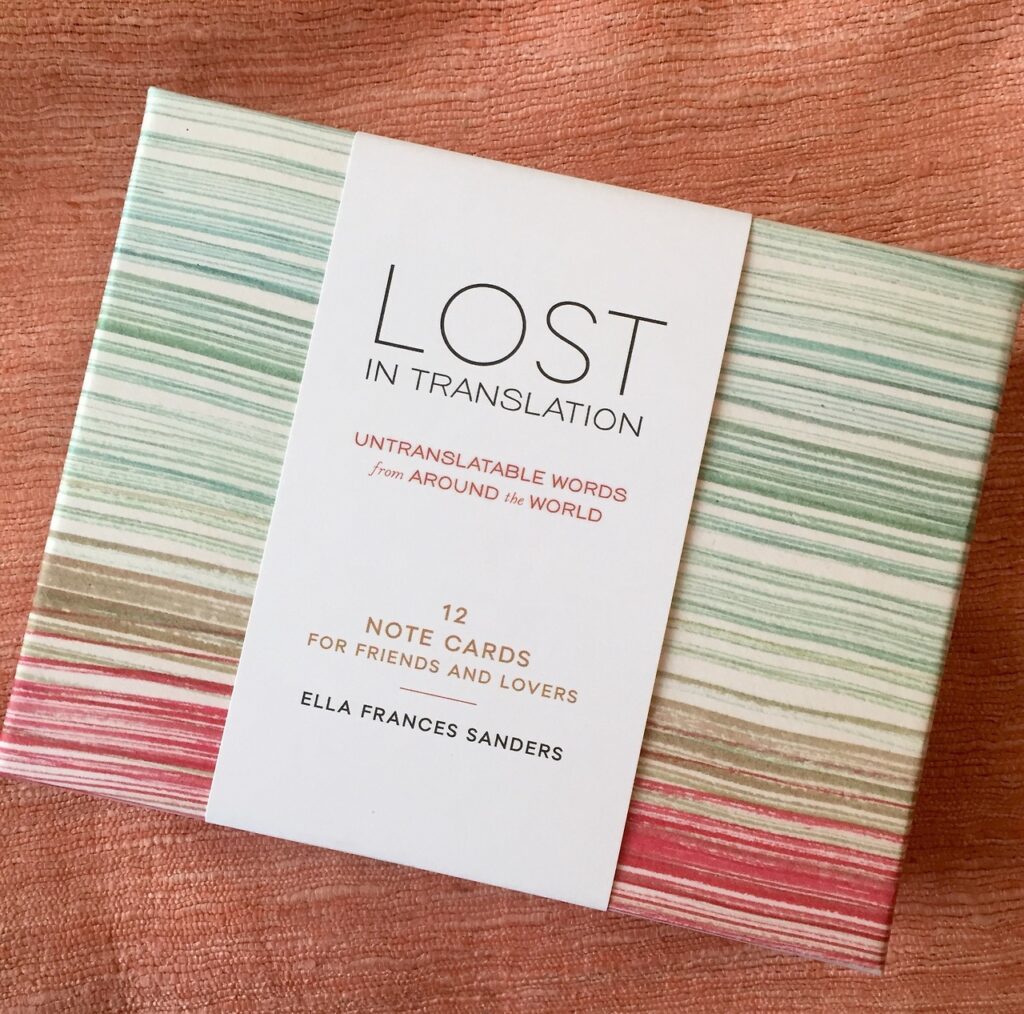
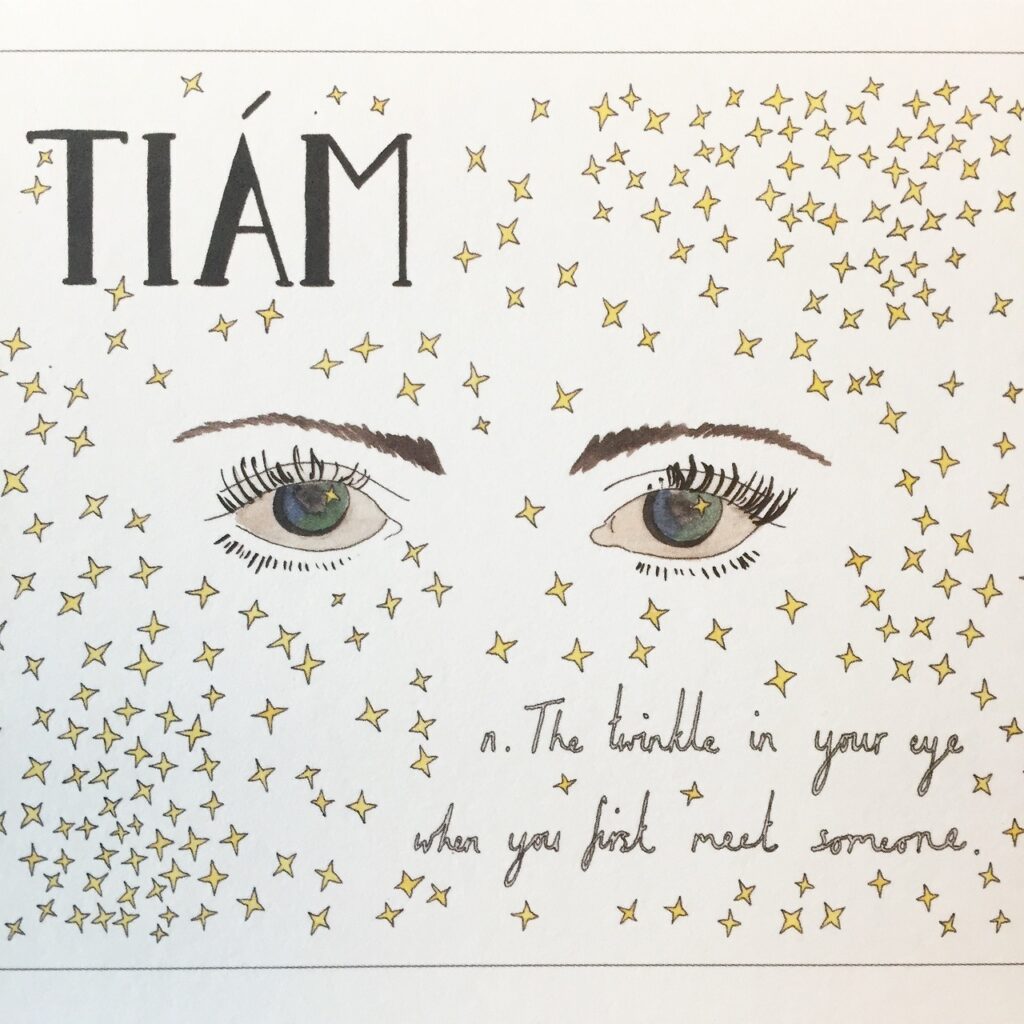
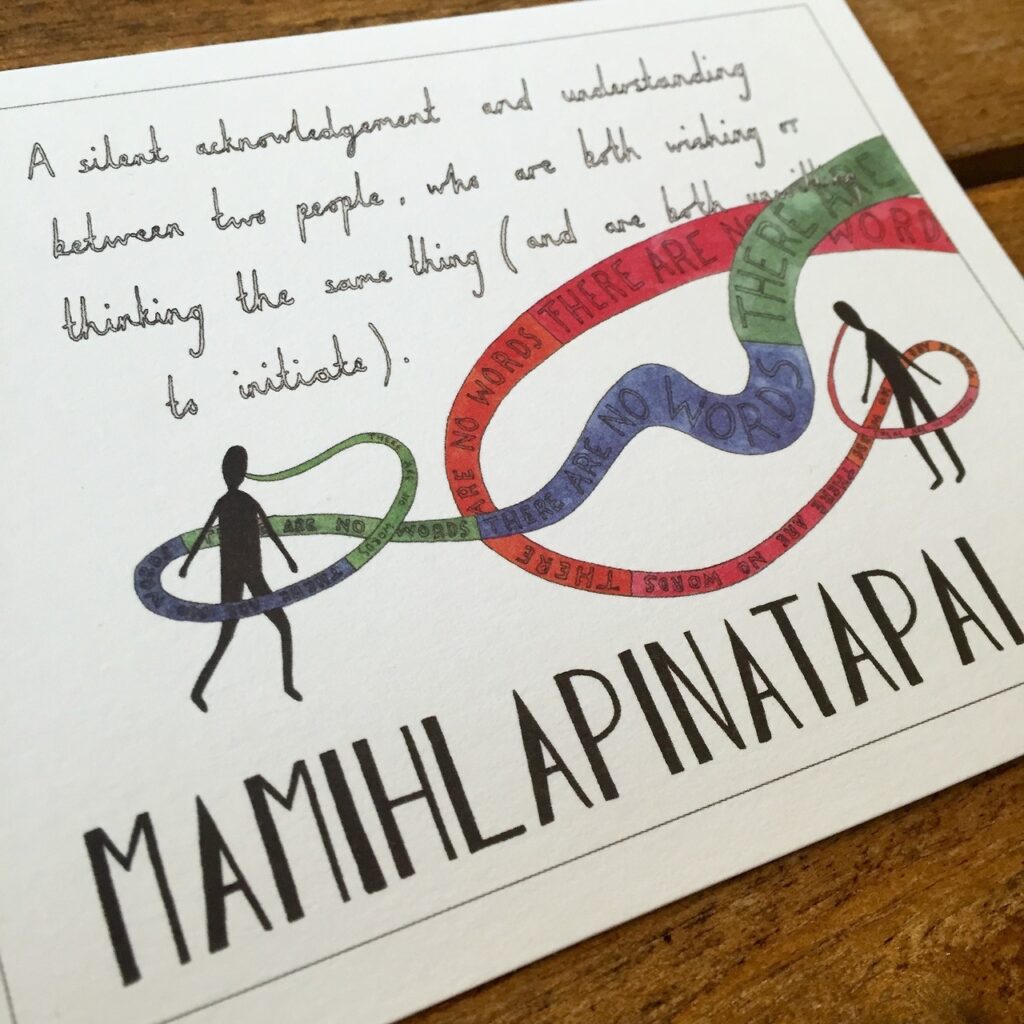

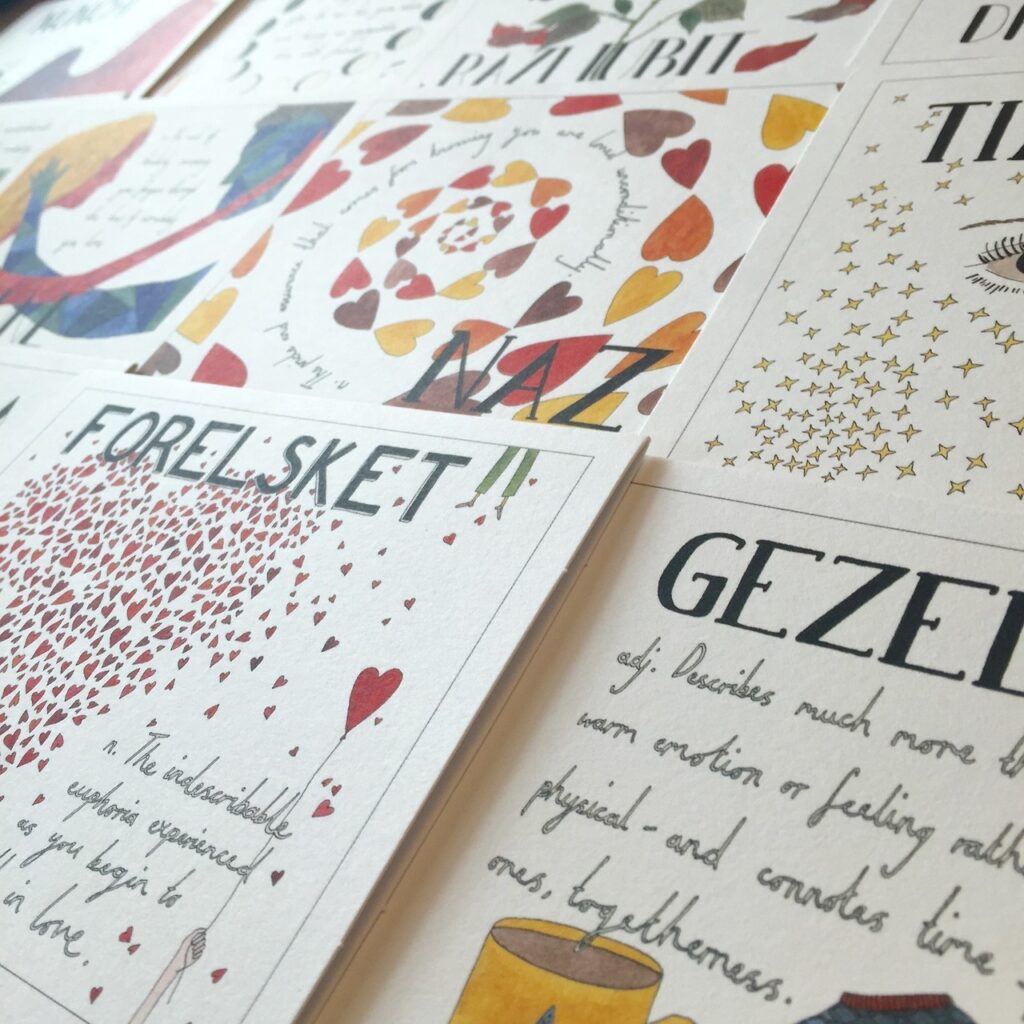

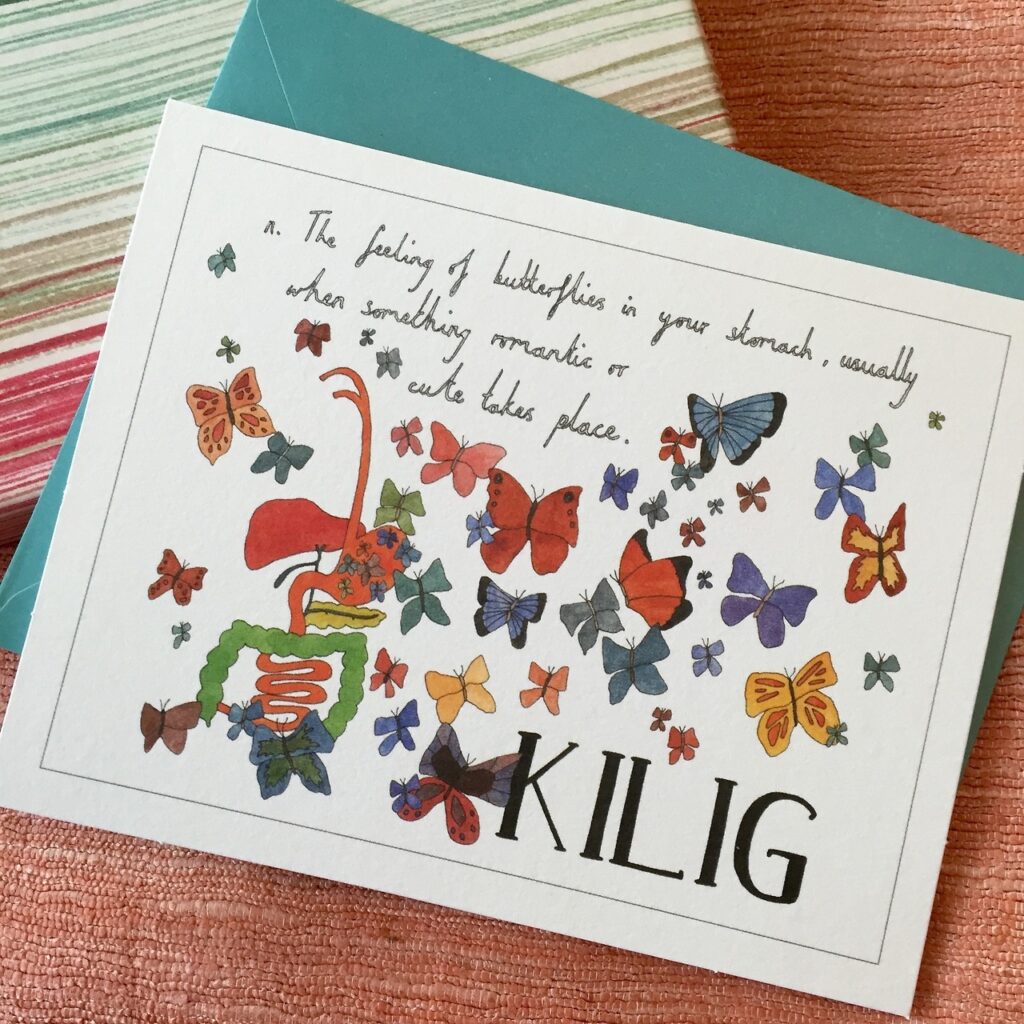

Lost in Translation Note Cards: Untranslatable Words from Around the World
by Ella Frances Sanders
Clarkson Potter
2016, 12 cards, 6.1 x 1.7 x 4.9 inches, Note cards
Like many, I’ve found myself at a loss for words lately. Luckily, Ella Frances Sanders has swooped in, like lexical brooming shooing away the cat that caught my tongue. She’s actually done one better, because she replaced the words of disbelief and disgust that I had been clawing for with words of comfort and joy. The Lost in Translation Note Cards set is based on her 2014 book by the same name. Both book and cards are an illustrated collection of “untranslatable words from around the world,” and feature both written and drawn translations of each sentiment on the front and, on the back, the country of origin, part of speech, and a sweet, brief elaboration of the word by Sanders.
The 12 words chosen for the note card set are best for sending to “friends and lovers.” There is something in here for the full spectrum of those relationships. For the romantics, there’s the Brazilian Portuguese noun, cafuné, “the act of tenderly running your fingers through the hair of someone you love.” For a deeply appreciated friend, the Korean noun, nunchi, “the subtle, often unnoticed art of listening and gauging another’s mood.” The set includes standard mailing sized envelopes and each card is blank inside, so with just a stamp and whatever words the sender might find, they are ready to be sent. Now seems the perfect time to share a small gesture of love and a piece of art that celebrates the beauty of language around the world.
– Mk Smith Despres
THE SURREAL DREAMSCAPES OF WINSOR MCCAY

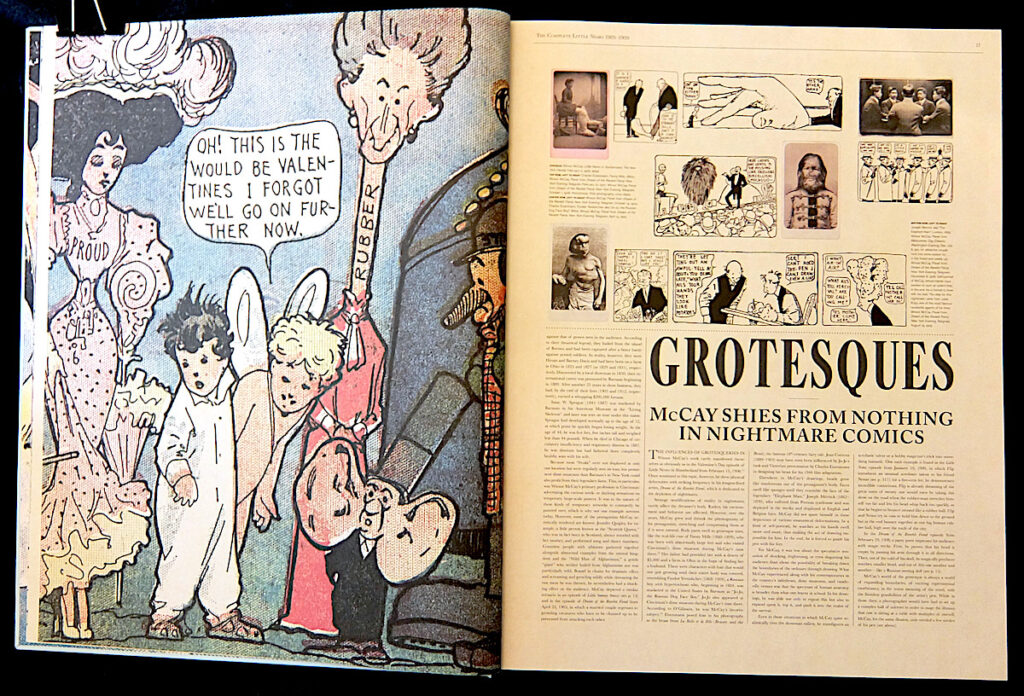





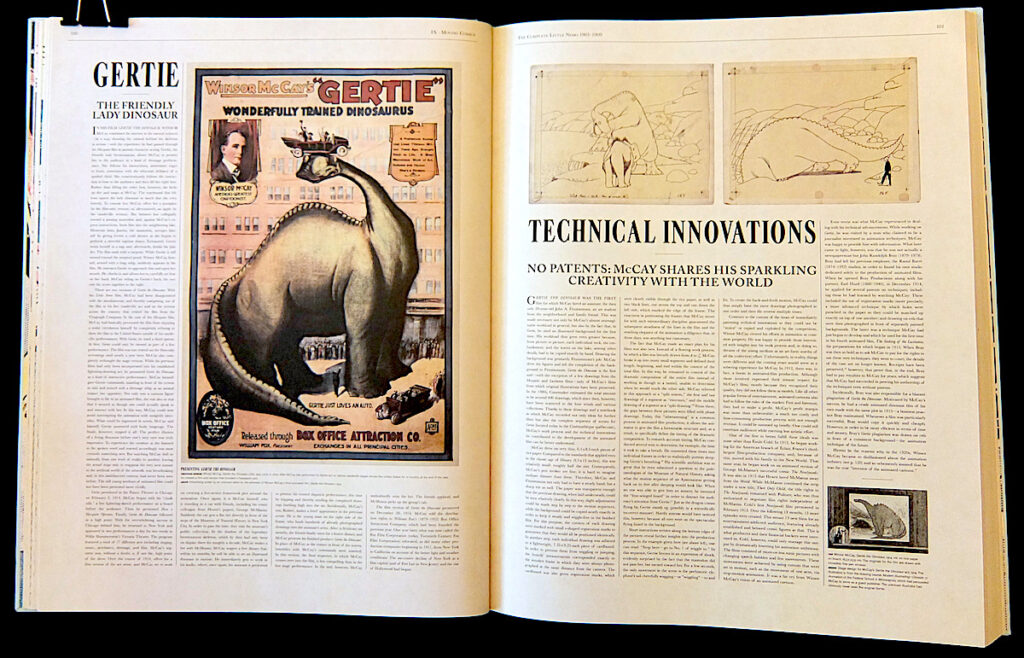
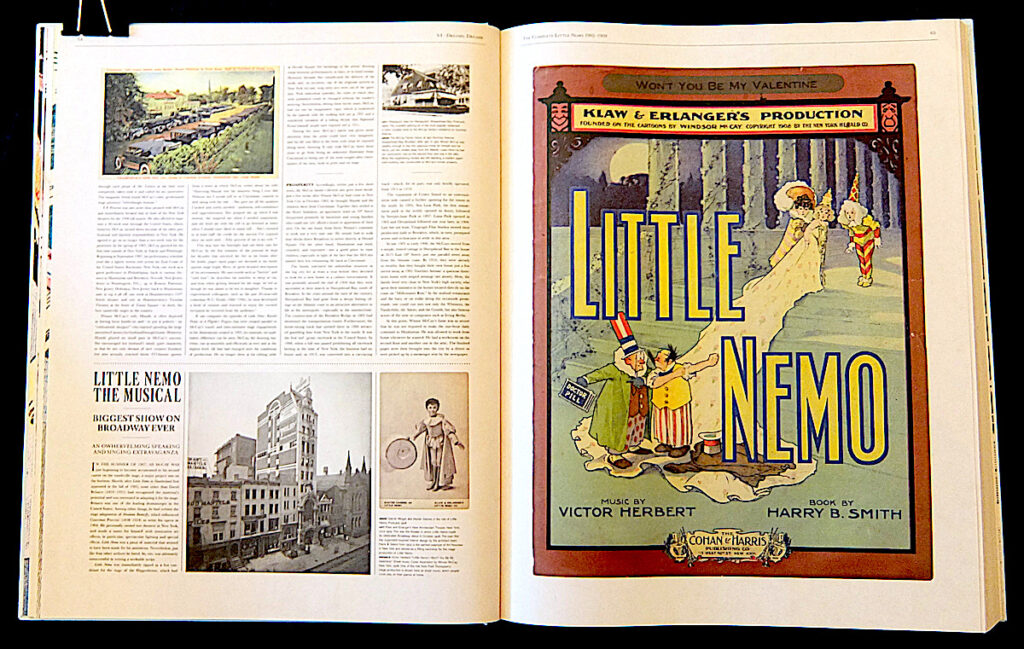
Winsor McCay: The Complete Little Nemo 1905-1909
by Alexander Braun
Taschen
2017, 368 pages, 13.5 x 1.5 x 17.2 inches, Hardcover
“Little Nemo in Slumberland” was a newspaper comic by Winsor McCay; it debuted in 1905. Those unadorned facts probably make the strip and its author sound like creaky footnotes from graphic-art history, but according to Alexander Braun — whose Winsor McCay: The Complete Little Nemo 1905-1909 was just reprinted in a more affordable hardback version than the $200, two-volume package from 2014 — the influence of both can be found in numerous forms of 20th-century storytelling.
When “Little Nemo” first appeared in the funny pages of The New York Herald, McCay had two other strips going at the same time. “Little Sammy Sneeze” revolved around a running gag told in six panels, in which a boy who cannot control the ferocity or timing of his sneezes blew out candles, caused elephants to stampede, and sank ships. More complex was “Dream of the Rarebit Fiend,” whose device was to subject a changing cast of characters to uneasy nightmares before waking them in the final panel, in which they invariably promised to swear off melted cheese on toast before bedtime.
“Little Nemo” riffed on the “Rarebit Fiend” formula except that it followed the same little boy — possibly modeled on McCay’s institutionalized brother — every night as he slept his way through gloriously surreal adventures on the way to, and eventually in, Slumberland. In addition to admiring McCay’s boundless imagination and skills as an illustrator, Braun is fascinated by how “Little Nemo” and its creator appeared to be in thick of so many contemporaneous issues and impulses. For example, there is the format of setting the strip in a dream state — coincidentally, Sigmund Freud’s “The Interpretation of Dreams” had just been published. In addition, McCay was surreal almost before the term was coined, and certainly before the genre became popular among art collectors. Then there was McCay’s impact on the culture: His animated films, including “Gertie the Dinosaur” from 1914, were inspirations to Walt Disney, while his comics were favorites of cartoonists as varied as R. Crumb, Moebius, Matt Groening, and Bill Watterson.
All that history makes for fascinating reading, and the newspaper-like layout on unbleached, newsprint-colored paper, will keep you turning the book’s enormous pages — although you will want to turn those pages at a sturdy table. Mostly, though, Little Nemo is a celebration of its namesake comic strip, all 220 of which from 1905 to 1909 are reprinted in rich color at almost full size. And as Nemo moves through McCay’s dreamscapes with Flip, Impie, Doctor Pill, and the Slumberland princess who holds the key to his heart at his side, we see McCay’s own influences on every page — from the sideshows he worked as a young man in Cincinnati to architectural references that recall world’s fair pavilions and Coney Island’s Dreamland. Like Nemo, you won’t want to wake up.
– Ben Marks
08/6/24





